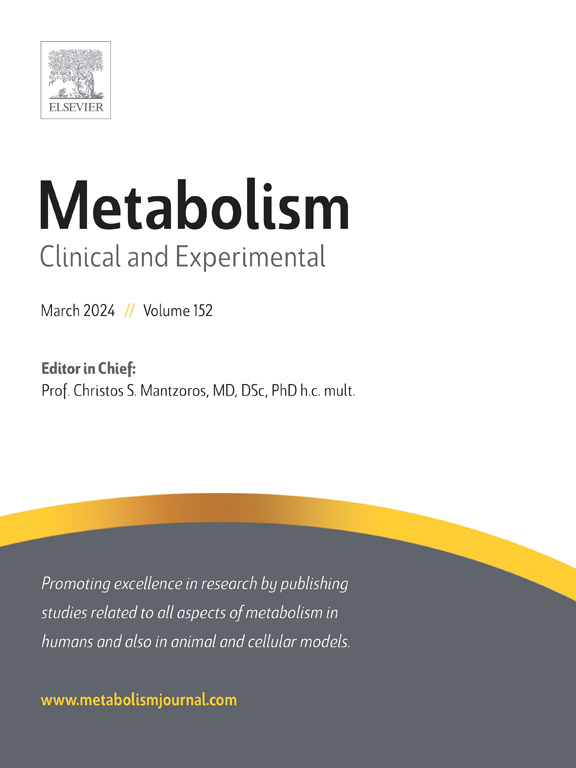趋化因子CCL20通过调节OLR1表达促进代谢功能障碍相关脂肪性肝炎期间肝细胞胆固醇沉积。
IF 11.9
1区 医学
Q1 ENDOCRINOLOGY & METABOLISM
引用次数: 0
摘要
背景与目的:代谢功能障碍相关脂肪性肝炎(MASH)正成为肝衰竭和肝移植的主要驱动因素。驱动MASH的具体致病机制尚不完全清楚。在这项研究中,我们旨在探讨CCL20在MASH进展中的作用。方法:利用RNA测序数据和小鼠MASH模型,分析CCL20在肝组织中的表达水平,以及CCL20表达水平与肝功能参数的相关性。采用肝CCL20基因敲除小鼠和肝祖细胞(HPC)/胆管细胞特异性CCL20基因敲除小鼠来评估CCL20在肝脂肪变性和炎症中的作用。CCL20影响MASH的机制通过体外和体内功能增加和丧失的方法进行了探索。结果:我们观察到CCL20在小鼠和人的MASH肝脏中显著上调,肝脏CCL20的表达与MASH严重程度呈正相关。CCL20主要由HPCs/胆管细胞产生,可被RELB和SOX9转录激活。在小鼠中,敲除HPCs/胆管细胞中的CCL20可减轻肝脏的病理变化。在机制上,CCL20通过与CCR6结合激活JNK信号通路,从而增加OLR1的表达,从而促进肝细胞中oxLDL的摄取和胆固醇的沉积。结论:这些发现暗示CCL20- ccr6 - jnk - olr1轴是MASH进展的关键决定因素,并强调CCL20抑制是一种有吸引力的治疗MASH的策略。本文章由计算机程序翻译,如有差异,请以英文原文为准。

The chemokine CCL20 promotes hepatocyte cholesterol deposition during metabolic dysfunction-associated steatohepatitis by regulating OLR1 expression
Background & aims
Metabolic dysfunction-associated steatohepatitis (MASH) is becoming a leading driver of liver failure and transplantation. The specific pathogenic mechanisms driving MASH remain incompletely understood. In this study, we aimed to investigate the role of CCL20 in MASH progression.
Methods
Using RNA sequencing data and murine models of MASH, we analyzed the expression levels of CCL20 in liver tissues, as well as the correlation of CCL20 levels with liver function parameters. Hepatic CCL20-knockdown and hepatic progenitor cell (HPC)/cholangiocyte-specific CCL20-knockout mice were used to assess the role of CCL20 in hepatic steatosis and inflammation. The mechanisms by which CCL20 influences MASH were explored via in vitro and in vivo gain- and loss-of-function approaches.
Results
We observed that CCL20 is significantly upregulated in MASH livers from mice and humans and that hepatic CCL20 expression is positively correlated with MASH severity. CCL20, which is mainly produced by HPCs/cholangiocytes, is transcriptionally activated by RELB and SOX9. In mice, CCL20 knockout in HPCs/cholangiocytes attenuated pathological changes in the liver. Mechanistically, by binding to CCR6, CCL20 activates the JNK signaling pathway, which increases OLR1 expression, thereby promoting oxLDL uptake and cholesterol deposition in hepatocytes.
Conclusion
These findings implicate the CCL20-CCR6-JNK-OLR1 axis as a crucial determinant of MASH progression and highlight CCL20 inhibition as an attractive therapeutic strategy for MASH.
求助全文
通过发布文献求助,成功后即可免费获取论文全文。
去求助
来源期刊

Metabolism: clinical and experimental
医学-内分泌学与代谢
CiteScore
18.90
自引率
3.10%
发文量
310
审稿时长
16 days
期刊介绍:
Metabolism upholds research excellence by disseminating high-quality original research, reviews, editorials, and commentaries covering all facets of human metabolism.
Consideration for publication in Metabolism extends to studies in humans, animal, and cellular models, with a particular emphasis on work demonstrating strong translational potential.
The journal addresses a range of topics, including:
- Energy Expenditure and Obesity
- Metabolic Syndrome, Prediabetes, and Diabetes
- Nutrition, Exercise, and the Environment
- Genetics and Genomics, Proteomics, and Metabolomics
- Carbohydrate, Lipid, and Protein Metabolism
- Endocrinology and Hypertension
- Mineral and Bone Metabolism
- Cardiovascular Diseases and Malignancies
- Inflammation in metabolism and immunometabolism
 求助内容:
求助内容: 应助结果提醒方式:
应助结果提醒方式:


